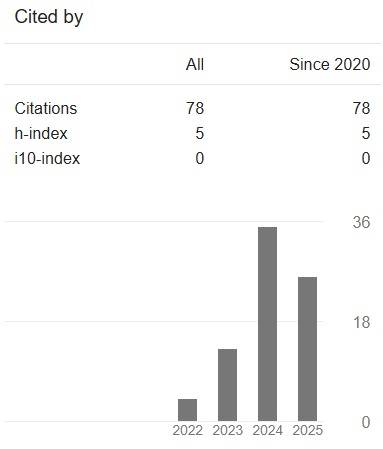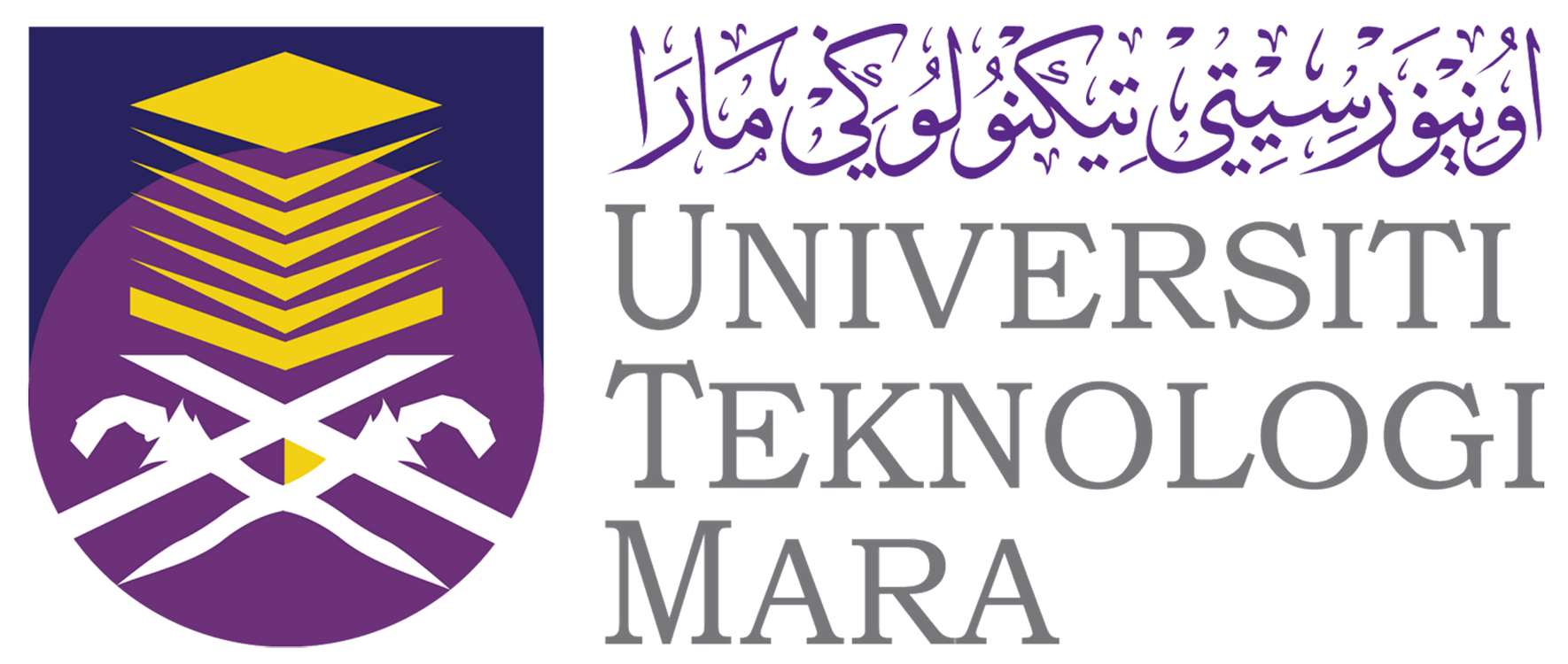Methodical procedure of virtual manufacturing for analysing WAAM distortion along with experimental verification
DOI:
https://doi.org/10.24191/jaeds.v1i1.31Abstract
This paper deals with a principal development of virtual manufacturing (VM) procedure to predict substrate distortion induced by Wire Arc Additive Manufacturing (WAAM) process. In this procedure, a hollow shape is designed in a thin-walled form made of stainless steel. The procedure starts with geometrical modelling of WAAM component consisting of twenty-five deposited layers with austenitic stainless-steel wire SS316L as feedstock and SS304 as substrate material. The hollow shape is modelled based on simplified rectangular mesh geometry with identical specimen dimensions during the experiment. Material model to be defined can be retrieved directly from a database or by conducting a basic experiment to obtain the evolution of material composition, characterized using Scanning Electron Microscopy (SEM) with Energy Dispersive X-ray (EDX) analysis, and generated using advanced modelling software JMATPRO for creating new properties including the flow curves. Further, a coupled thermomechanical solution is adopted, including phase-change phenomena defined in latent heat, whereby temperature history due to successive layer deposition is simulated by coupling the heat transfer and mechanical analysis. Transient thermal distribution is calibrated from an experiment obtained from thermocouple analysis at two reference measurement locations. New heat transfer coefficients are to be adjusted to reflect actual temperature change. As the following procedure prior to simulation execution, a sensitivity analysis was conducted to find the optimal number of elements or mesh size towards temperature distribution. The last procedure executes the thermomechanical numerical simulation and analysis the post-processing results. Based on all aspects in VM procedures and boundary conditions, WAAM distortion is verified using a robotic welding system equipped with a pulsed power source. The experimental substrate distortion is measured at various points before and after the process. It can be concluded based on the adjusted model and experimental verification that using nonlinear numerical computation, the prediction of substrate distortion with evolved material property of component yields far better result which has the relative error less than 11% in a comparison to database material which has 22%, almost doubled the inaccuracy.
Downloads
References
Q. Wang, "Virtual manufacturing and systems" E Manufacturing.; 2005. DOI:10.2495/978-1-85312-998-8/09
V.G Bharath, R. Patil, "Virtual Manufacturing: A Review" International Journal of Engineering Research and Technology: NCRERAME 2015 Conference Proceeeding., vol 3, no 17, 2015, DOI:10.1015/j.NCRERAME.2015.10.017
C. Shukla, M. Vazques et al., "Virtual manufacturing: an overview," Computer India Engineering. Vol 31, pp. 79-82, 1996 DOI:10.1016/0360-8352(96)00083-6
K. Iwata et al., "Modelling and Simulation Architecture for Virtual Manufacturing Systems" CIRP Ann - Manuf Technol. vol 44, no 1, pp. 399-402, 1995. DOI:10.1016/S0007-8506(07)62350-6
H.G Lemu, "Virtual engineering in design and manufacturing," Additive Manufacturing, vol 2, no 4, pp. 289-294, 2014. DOI:10.1007/s40436-014-0085-y
F. Klocke and A. Straube, "Virtual Process Engineering – An approach to integrate VR, FEM, and simulation tools in the manufacturing chain,", 2004;5. DOI:10.1051/meca:2004021
Li, Y. Sun et al., "Enhanced beads overlapping model for wire and arc additive manufacturing of multi-layer multi-bead metallic parts," J Mater Process Technol, vol 242, pp. 838-848, 2018, DOI:10.1016/j.jmatprotec.2017.10.017
J. Xiong, R. Li et al., "Heat propagation of circular thin-walled parts fabricated in additive manufacturing using gas metal arc welding. J Mater Process Technol. 2018;251(August 2017):12-19. vol 251, pp. 12-19, 2018. DOI:10.1016/j.jmatprotec.2017.08.007
K. Derekar, J. Lawrence et al., "Influence of Interpass Temperature on Wire Arc Additive Manufacturing (WAAM) of Aluminium Alloy Components," MATEC Web of Conference, vol 269, 2019. DOI:10.1051/matecconf/201926905001.
ER. Delinger, P. Michaleris, "Effect of stress relaxation on distortion in additive manufacturing process modeling," Additive Manufacturing vol 12, pp. 51-59, 2016. DOI:10.1016/j.addma.2016.06.011
C. Cambon, I. Bendaoud, S. Rouquette et al., "Influence of the first weld bead on strain and stress states in wire + arc additive manufacturing," HAL Id : hal-01954354. 2018.
F. Montevecchi, G. Venturini et al., "Finite Element Modelling of Wire-arc-additive-manufacturing Process," Procedia CIRP. vol 55, pp. 109-114, 2016. DOI:10.1016/j.procir.2016.08.024
M. Graf, A. Hälsig et al., "Thermo-mechanical modelling of wire-arc additive manufacturing (WAAM) of semi-finished products," Metals (Basel), vol 8, no 12, 2018. DOI:10.3390/met8121009
Y. Yehorov, L.J Da Silva, A. Scotti, "Exploring the use of switchback for mitigating homoepitaxial unidirectional grain growth and porosity in WAAM of aluminium alloys," Int J Adv Manuf Technol. vol 104, no 1-4, pp. 1581-1592, 2019. DOI:10.1007/s00170-019-03959-w
T. He, S. Yu et al., "High-accuracy and high-performance WAAM propeller manufacture by cylindrical surface slicing method", Int J Adv Manuf Technol. vol 105, 2019. DOI:10.1007/s00170-019-04558-5
B. Panda, K. Shankhwar et al., "Evaluation of genetic programming-based models for simulating bead dimensions in wire and arc additive manufacturing," J. Intell Manuf. November 2016. DOI:10.1007/s10845-016-1282-2
Z. Hu, X. Qin et al., "Multi-bead overlapping model with varying cross-section profile for robotic GMAW-based additive manufacturing", J Intell Manuf. October 2019. DOI:10.1007/s10845-019-01501-z
S. M, Rai S., Kumar et al. "Temperature distribution and residual stresses due to multipass welding in type 304 stainless steel and low carbon steel weld pads," Int J Press Vessel, vol 78, pp. 308-317, 2001. DOI:10.1016/S0308-0161(01)00047-3
I. Tolosa, F. Garciandía et al., "Study of mechanical properties of AISI 316 stainless steel processed by “selective laser melting”, following different manufacturing strategies," Int J Adv Manuf Technol. vol 51, pp. 639-647, 2010. DOI:10.1007/s00170-010-2631-5
P. Li, Y. Gong et al., "Effect of post-heat treatment on residual stress and tensile strength of hybrid additive and subtractive manufacturing," Int J Adv Manuf Technol. vol 103, 2019. DOI:10.1007/s00170-019-03705-2
K. D Ramkumar et al., "Characterization of metallurgical and mechanical properties on the multi-pass welding of Inconel 625 and AISI 316L," J Mech Sci Technol. vol 29, 2014. DOI:10.1007/s12206-014-1112-4
N. Haneklaus, C. Cionea et al., "Hybrid friction diffusion bonding of 316L stainless steel tube-to-tube sheet joints for coil-wound heat exchangers," J Mech Sci Technol. vol 30, pp 4925-4930, 2014. DOI:10.1007/s12206-016-0832-z
Y.H.P Manurung, K.P Prajadhiana et al., "Anaysis of material property models on WAAM distortion using non-linear numerical computation and experiment verification with P-GMAW", Archives of Civil and Mechanical Engineering. vol 21, 2021. DOI: 10.1007/S43452-021-00189-4
K.P Prajadhiana, Y.H.P Manurung et al., "Development of bead modelling for distortion induced by wire arc additive manufacturing," Matec Web of Conferences. vol 269, 2019. DOI: 10.1051/matecconf/201926905003
J. Guo et al., "Thomson RC. Influence of weld thermal cycle and post weld heat treatment on the microstructure of MarBN steel," Int J Press Vessel Pip. vol 174, pp. 13-24, 2019. DOI:10.1016/j.ijpvp.2019.05.010
N. Saunders, G. Zhanli et al., "Using JMatPro to model material properties and behavior," JOM: The Journal of the Minerals, Metals and Material Society. vol 55, no 12, pp. 60-65, 2003 doi: 10.1007/s11837-003-0013-2
M. Hamahmy, I. Deiab, "Review and analysis of heat source models for additive manufacturing", Int J Adv Manuf Technol. 2019. DOI:10.1007/s00170-019-04371-0
D.H Ang, C.H Kim et al., "Numerical analysis of welding residual stress using heat source models for the multi-pass weldment", KSME Int J. vol 16, pp. 1054-1064, 2002.
M. Abid, M.J Qarni, "3D thermal finite element analysis of single pass girth welded low carbon steel pipe-flange joints," Turkish Journal of Engineering and Enviromental Science. vol 33, pp. 281-293, 2009. doi 10.3906/muh-0912-6.
J. Zhang, L. Yu et al., "Effect of welding sequences on the welding stress and distortion in the CFETR vacuum vessel assembly using finite element simulation," Int J Press Vessel Pip. vol 175(July), 2019. DOI:10.1016/j.ijpvp.2019.103930.
T.S Kumar, N. Atikukke, R. Kannan, "Thermal cycling effects on the creep-fatigue interaction in type 316LN austenitic stainless steel weld joint", Int J Press Vessel Pip. 2019:104009. DOI:10.1016/j.ijpvp.2019.104009.
D.V Duvaraj, "3D Finite element simulation of temperature distribution, residual stresses on 304 stainless steel plates using GTA welding, "Journal of Mechanical Science and Technology. vol 30, pp. 67-76, 2017. DOI:10.1007/s12206-015-1208-5.
Z. Hu, X. Qin, T. Shao, "Welding Thermal Simulation and Metallurgical Characteristics Analysis in WAAM for 5CrNiMo Hot Forging Die Remanufacturing," Procedia Eng. vol 207, pp. 2203-2208, 2017. DOI:10.1016/j.proeng.2017.10.982
L. Guo, J. Xiang, "A numerical investigation of mesh sensitivity for a new three-dimenstional fracture model within the combined finite-discrete element method," Engineering Fracture Mechanics. vol 151, 2017. DOI: 10.1016/j.engfracmech.2015.11.006
Downloads
Published
How to Cite
Issue
Section
License
Copyright (c) 2021 Keval Priapratama Prajadhiana, Yupiter HP Manurung, Alexander Bauer, Mohamed Ackiel Mohamed

This work is licensed under a Creative Commons Attribution 4.0 International License.









